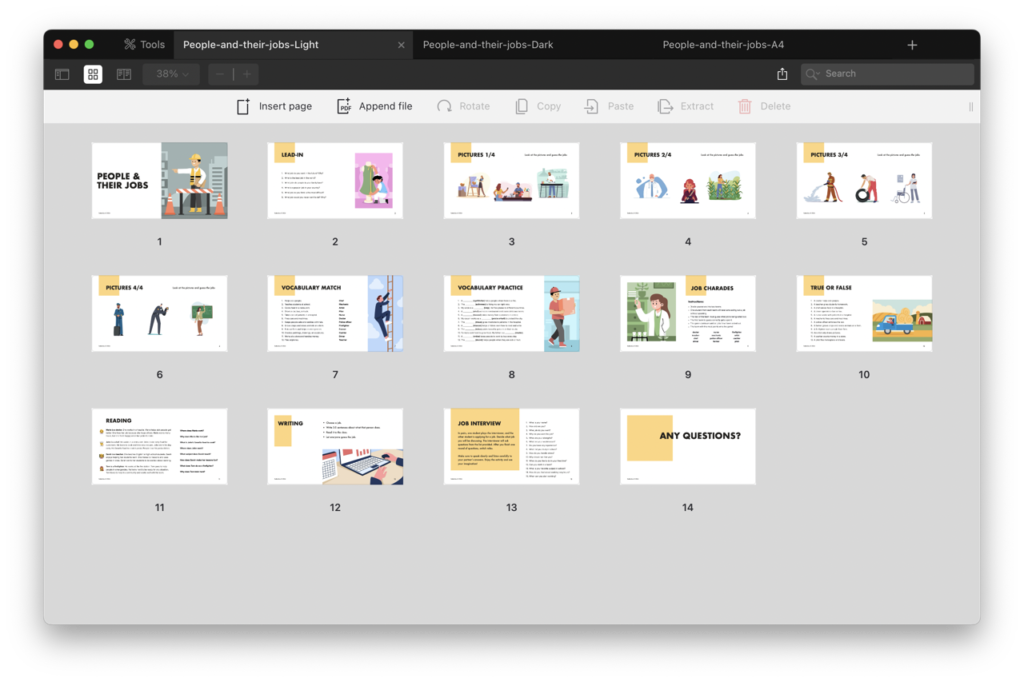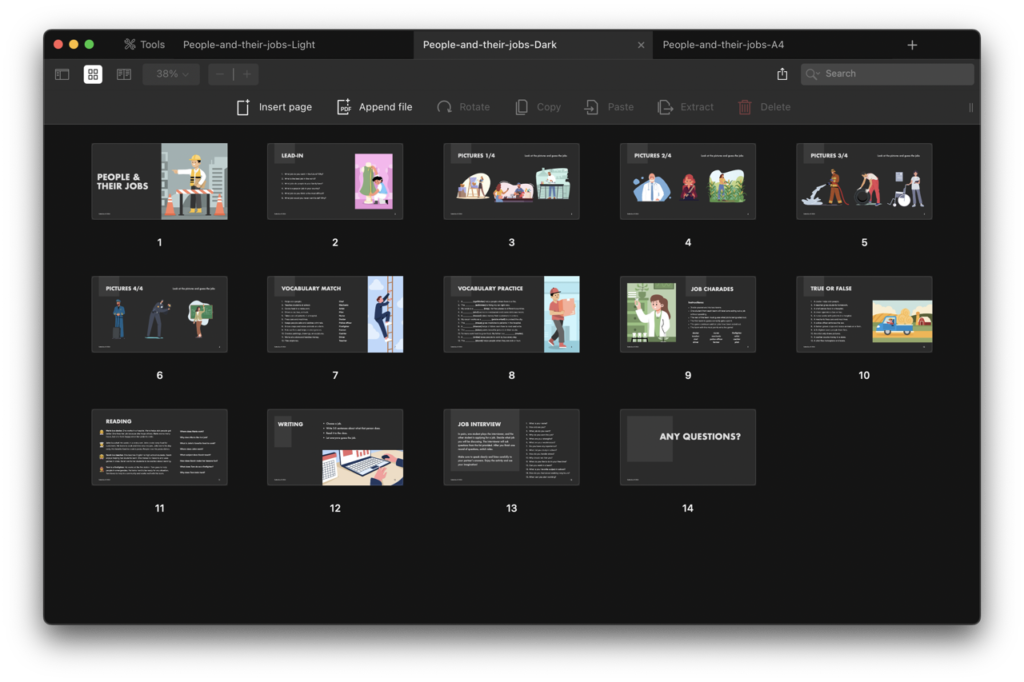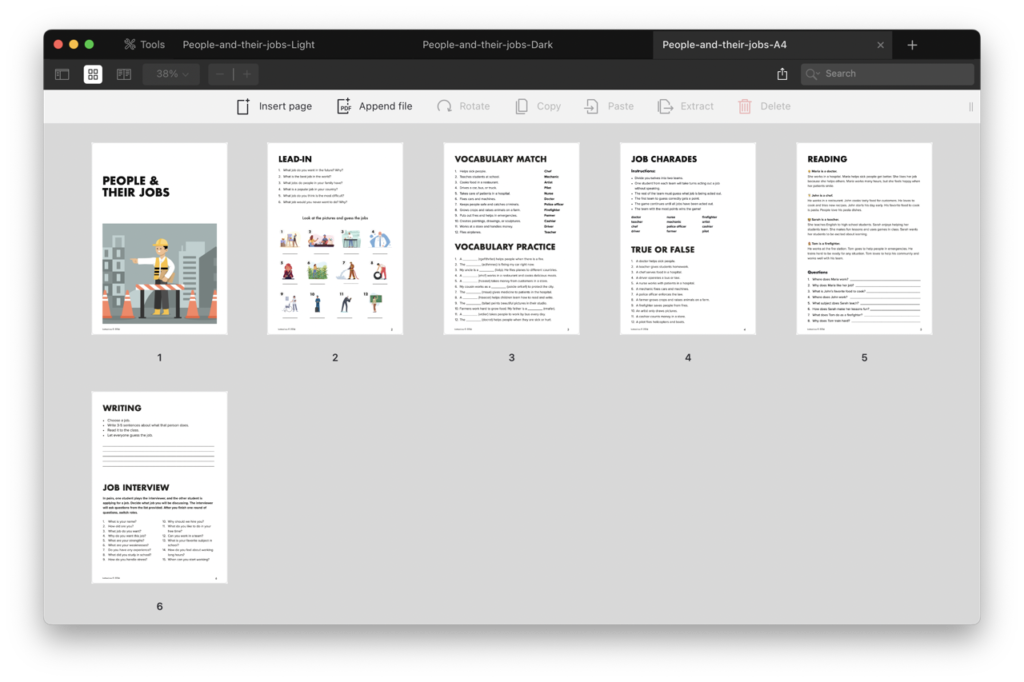People & Their Jobs

This A2 ESL lesson introduces students to common jobs and job-related vocabulary through fun and engaging activities. Students will practice matching job descriptions, participate in a lively charades game, and read about different professions. The lesson also includes writing tasks and a role-play interview to improve speaking and listening skills. It’s a perfect lesson for building confidence while learning about occupations in a real-world context.
| Type | Level | Vocabulary | Lesson Time |
| Regular Lesson | A2 / Pre-Intermediate | 12 words | 60 min |



Vocabulary
- Police officer
- Chef
- Mechanic
- Artist
- Pilot
- Nurse
- Doctor
- Firefighter
- Farmer
- Cashier
- Driver
- Teacher
Contents
- Lead-in
- 12 pictures of jobs
- Vocabulary match
- Vocabulary practice
- Job charades
- True or false
- Reading
- Writing
- Job interview
Lead-in, Pictures
This A2 ESL lesson on jobs serves as a great introduction to common occupations and job-related vocabulary. The lesson begins with a warm-up activity, where students answer 6 discussion questions related to jobs and career aspirations. This section encourages students to express their opinions and share personal experiences about different jobs in pairs or small groups. This activity helps set the stage for the lesson by engaging students in a conversation about work, while introducing key vocabulary in a natural way.
Vocabulary match, Vocabulary practice
The vocabulary section introduces 12 common jobs, including Police Officer, Chef, Mechanic, Artist, Pilot, Nurse, Doctor, Firefighter, Farmer, Cashier, Driver, and Teacher. Students are provided with short, simple descriptions of each job, and they must match these descriptions to the corresponding job titles. This matching exercise reinforces vocabulary comprehension and ensures that students understand what each profession entails. Afterward, students practice their knowledge by unscrambling job-related words and filling in the blanks in sentences, continuing to work with the same 12 occupations. This activity helps students internalize the new vocabulary while improving their writing skills.
Job charades, True or false
Next, the lesson introduces a lively and engaging game called “Job Charades.” Students are divided into two teams, and each team selects a job to act out without speaking while their teammates try to guess what job is being portrayed. The game continues until all the jobs have been acted out, allowing for repeated practice of the vocabulary in a fun, competitive atmosphere. Following this, there is a True or False activity where students, either in pairs or individually, are presented with statements about each job. They must decide if each statement is accurate or not, providing a great opportunity to practice comprehension and critical thinking.
Reading, Writing
In the reading section, students are given four short paragraphs that describe different people, their jobs, and what they do in their roles. Each student takes turns reading a paragraph aloud, and the class then answers comprehension questions based on the text. Afterward, students move on to a writing activity, where they are tasked with writing a short paragraph (3-5 sentences) describing any job they choose. They then read their paragraph aloud to the class, who will try to guess the job being described. During this process, the teacher provides guidance, helping students correct any mistakes and encouraging creativity in their descriptions.
Job interview
Finally, the lesson concludes with a role-play activity designed to simulate a job interview. One student takes on the role of the interviewer, while another plays the role of the job applicant. Suggested questions are provided, such as “What is your name?”, “What job are you applying for?”, and “Why do you want this job?”, but students are encouraged to come up with their own questions. This activity is a practical and engaging way to encourage students to apply the vocabulary and concepts they have learned throughout the lesson, giving them an opportunity to practice speaking and listening in a real-world context.



